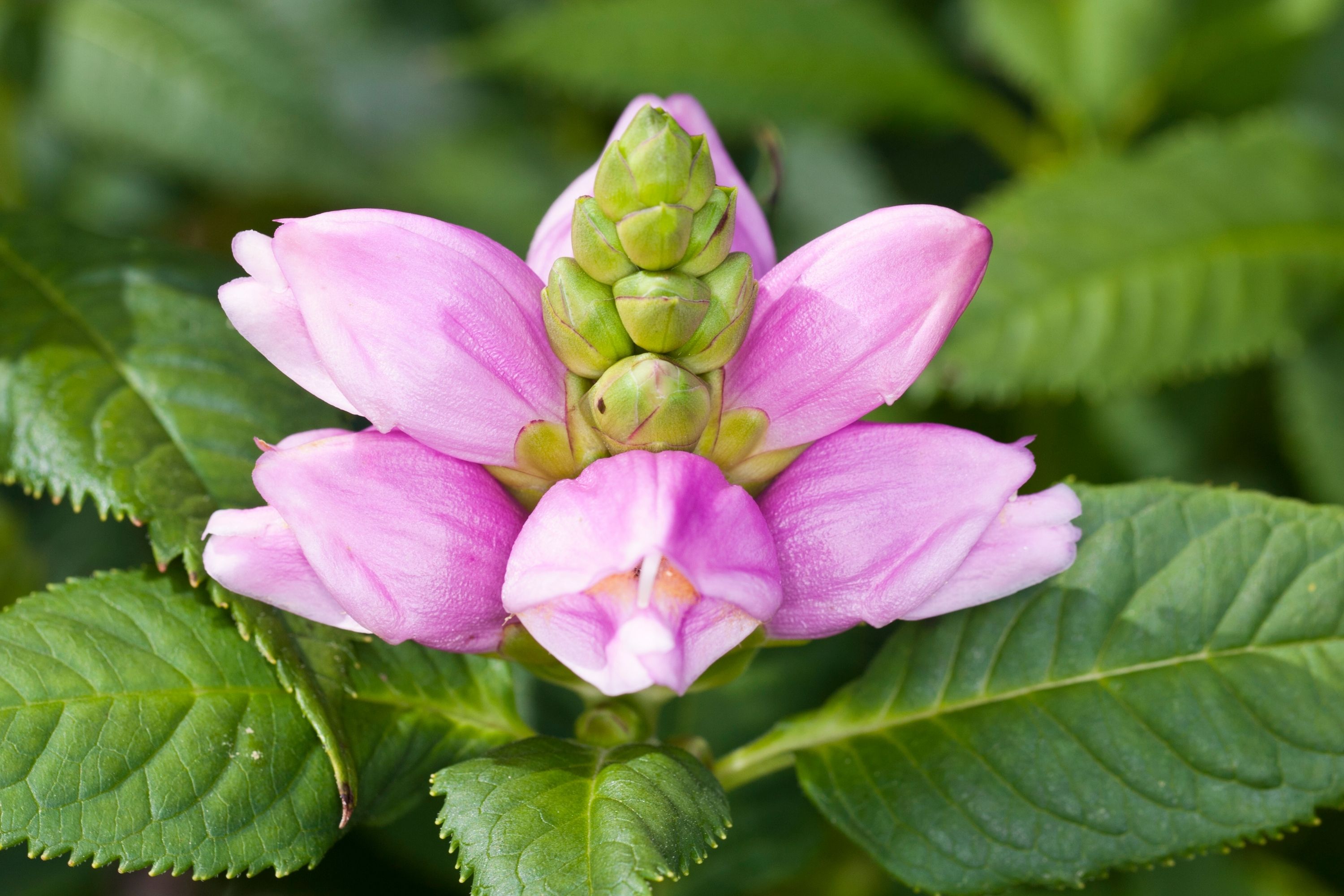Red Turtlehead
(Chelone obliqua)

Description
Chelone obliqua, commonly known as the Turtlehead plant, is a native herbaceous perennial plant species in the family Plantaginaceae. It is known for its unique flower structure, which resembles the head of a turtle, and it is found in moist habitats such as swamps, marshes, and wet meadows in the eastern United States and Canada. The name "Chelone" is derived from the Greek word "chelone," meaning turtle, which refers to the shape of the flower. In this article, we will explore the characteristics, cultivation, and uses of Chelone obliqua. Description: Chelone obliqua typically grows to a height of 2-3 feet and has an upright growth habit. The leaves are opposite, toothed, and dark green in color. The flowers are produced on spikes that rise above the foliage and have a distinctive shape that resembles a turtle's head. The flowers are typically white or pink in color, but can also be shades of red or purple. The blooms appear from late summer to early fall and are highly attractive to pollinators such as bees, butterflies, and hummingbirds. Cultivation: Chelone obliqua is a relatively low-maintenance plant that is easy to grow in moist, well-drained soil. It prefers full sun to partial shade and thrives in wetland habitats, but can also tolerate drier soils. The plant is hardy to USDA zones 3-8 and can be propagated by division or by sowing seeds in the fall. Propagation by division is best done in the spring when the plant is just beginning to emerge from dormancy. Dig up the plant and divide it into smaller clumps, making sure that each section has a healthy root system. Replant the divided sections in a new location, making sure to water the plant thoroughly. Propagation by seed can be done in the fall, after the flowers have faded and the seed pods have matured. Collect the seeds from the dried pods and plant them in a location with moist soil. Keep the soil consistently moist until the seedlings emerge. Uses: Chelone obliqua has both ornamental and medicinal uses. The plant is commonly grown in gardens as a showy, late-season bloomer and can be used as a border plant or in a mixed perennial bed. It is also suitable for naturalizing in wetland areas and can be used to attract pollinators to a garden. In traditional medicine, Chelone obliqua has been used as a treatment for a variety of ailments, including fevers, digestive disorders, and respiratory infections. The plant contains several compounds with anti-inflammatory and antimicrobial properties, which may account for its medicinal effects. However, more research is needed to fully understand the plant's potential health benefits. Conclusion: Chelone obliqua, also known as the Turtlehead plant, is a unique and attractive perennial plant that is well-suited for moist habitats in the eastern United States and Canada. Its distinctive flower shape and late-season blooming make it a popular choice for ornamental gardens, and its potential medicinal properties make it a valuable plant in traditional medicine. With its low-maintenance cultivation requirements, Chelone obliqua is a great choice for gardeners looking to add interest and diversity to their gardens.
Taxonomic tree:







